How to choose bathroom tile trim
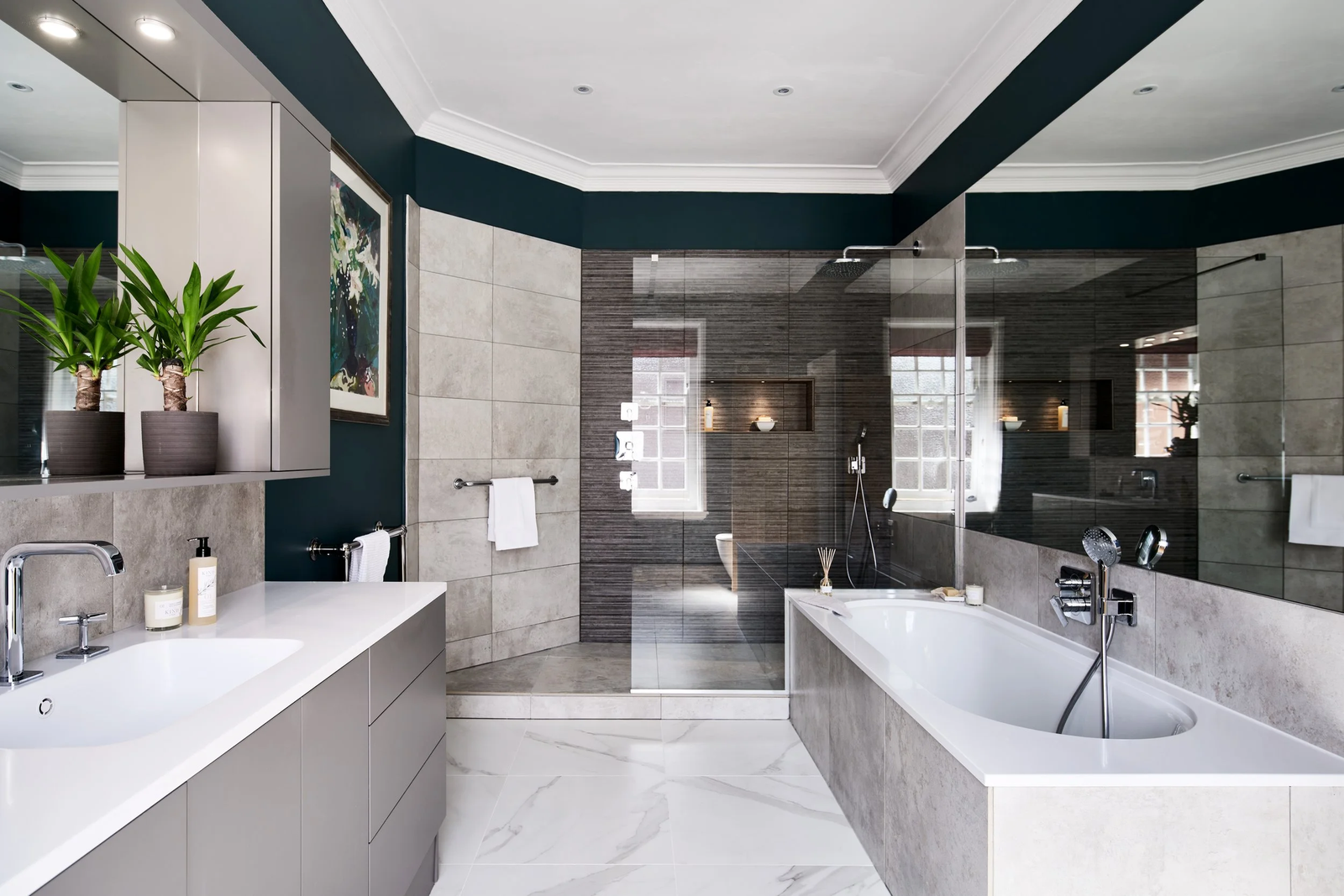
Understanding the Fundamentals
Bathroom tile trim is a vital component for a durable, professional bathroom renovation finish. Often underappreciated, it protects tile edges from chipping, ensures smooth surface transitions, and boosts visual appeal. In humid bathrooms, the right trim prevents water damage, enhances safety by softening sharp edges, and unifies the design. This guide, informed by expert sources, covers basics, types, materials, and tips for informed choices, from fundamentals to detailed comparisons.
Start renovations by evaluating space. Accurately measure tile thickness—standard ranges from 1/4 to 1/2 inch—with trim needing 1/16 to 1/8 inch extra depth for adhesive. Review layout: Need trim for corners, niches, or thresholds? Focus on waterproof, rust-resistant choices for wet-area longevity.
Exploring Types of Bathroom Tile Trim
There are numerous types of bathroom tile trim, each suited to specific functions and styles. Here's a detailed breakdown of popular options, including their descriptions, advantages, drawbacks, and bathroom-specific applications. This variety allows for customization, from minimalist modern designs to luxurious traditional setups.
- Straight Edge Trim: L-shaped with a 90-degree angle. One side sits under the tile, the other covers the edge. Pros: Clean, crisp finish; easy to install. Cons: Limited flexibility for curves. Ideal for bathroom walls and countertops where straight lines dominate.
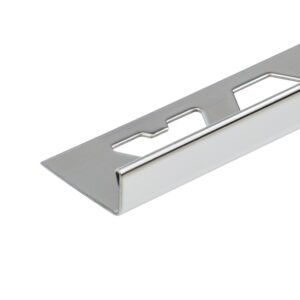
- Square Edge Trim: Features sharp, defined edges. Pros: Modern neatness; practical for alignment. Cons: Can feel stark in softer designs. Great for contemporary bathrooms seeking visual clarity.
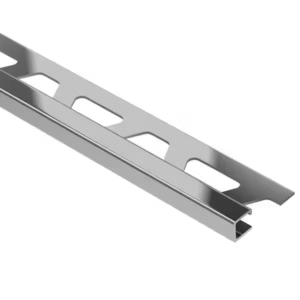
- Round Edge (Bullnose) Trim: Smooth, curved surface. Pros: Safer for families; cohesive with rounded fixtures. Cons: May not suit ultra-modern aesthetics. Commonly used in bathroom showers and around corners to minimize injury risks.
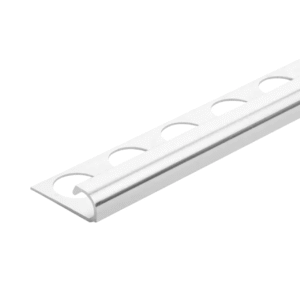
- T-Shape Trim: Metal profile for transitions. Pros: Strong protection; color variety. Cons: More visible if not matched well. Perfect for joining tiles in bathroom floors or walls.
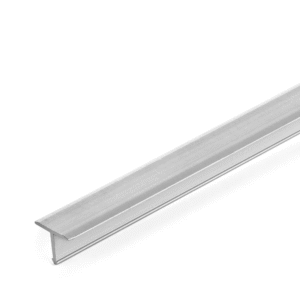
- U-Shape Trim:Encases tile ends. Pros: Hides imperfections; neat decoration. Cons: Best for walls only. Suited for bathroom wall transitions in damp zones.

- V-Shape Trim: For corners and frames. Pros: Impact protection; safety-focused. Cons: Specific to angles. Useful in bathroom door frames or stair edges if applicable.
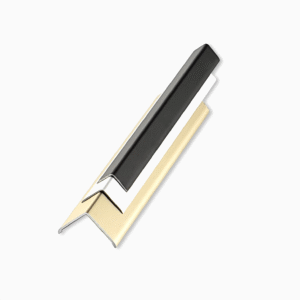
- Inside Corner Trim:Concave for internal junctions. Pros: Seamless transitions; easy cleaning. Cons: Limited to corners. Essential for bathroom floor-wall meets to prevent dirt buildup.

- Ramp Edge Trim:Sloped for height differences. Pros: Trip prevention; visual flow. Cons: Not for all flat surfaces. Handy in bathrooms with varying floor levels.
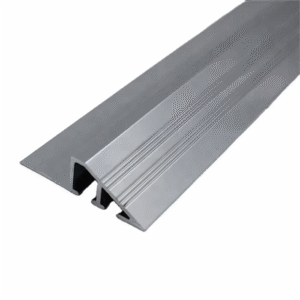
- Balcony Trim: Perimeter protection with drainage. Pros: Weather-resistant (adaptable to indoors). Cons: Outdoor-focused. Can work in large bathrooms for edge safety.
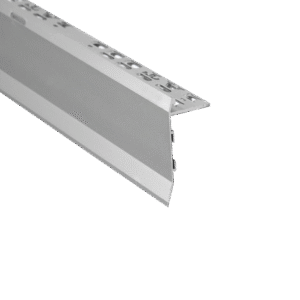
- Bendable Trim: Flexible for curves. Pros: Versatile for unique shapes. Cons: May require more skill to install. Ideal for arched bathroom niches or custom designs.
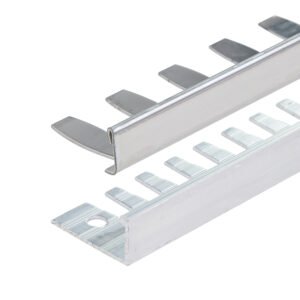
- Chair Rail Trim: Thick framing piece. Pros: Adds depth; protective. Cons: Bulkier. Excellent for bathroom backsplashes or mosaic borders.
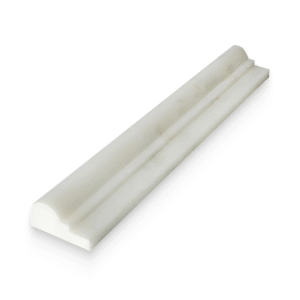
- Pencil Liner Trim: Thin, cylindrical. Pros: Minimalist; subtle accents. Cons: Fragile. Perfect for framing shower niches or adding detail without overwhelming.

- Cove Base Trim:Concave baseboard alternative. Pros: Moisture sealing; hygienic. Cons: Specific to bases. Vital for bathroom floor-wall joints.

- Metal Band Trim:Slim metallic strips. Pros: Luxurious contrast; durable. Cons: Higher cost. Enhances marble-look tiles in upscale bathrooms.
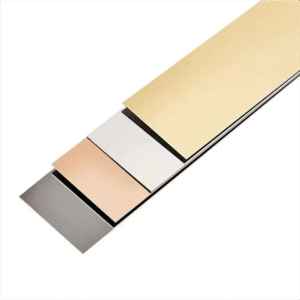
For a side-by-side view, refer to the following tables comparing key categories. These highlight differences to aid in choosing tile trim that fits your needs.
Table 1: Material Comparison for Bathroom Tile Trim
|
Material |
Durability |
Moisture Resistance |
Cost Range |
Pros |
Cons |
Bathroom Suitability |
|---|---|---|---|---|---|---|
|
Metal (e.g., Stainless Steel, Aluminum) |
High |
Excellent |
Medium-High |
Rustproof; modern look |
Can be cold to touch |
Ideal for showers due to water resistance |
|
Ceramic/Porcelain |
Medium |
Good |
Low-Medium |
Seamless tile matching |
Prone to cracking |
Great for color coordination in walls |
|
PVC/Plastic |
Medium |
High |
Low |
Lightweight; affordable |
Less premium feel |
Budget-friendly for basic renovations |
|
Stone (e.g., Marble, Granite) |
High |
Medium |
High |
Luxurious; natural elegance |
Requires sealing |
Suited for high-end spas or large bathrooms |
|
Wood |
Low-Medium |
Low |
Medium |
Warm aesthetic |
Not ideal for wet areas |
Limited use; better in dry zones |
Table 2: Type Comparison by Function and Style
|
Type Category |
Examples |
Function |
Style Fit |
Pros |
Cons |
|---|---|---|---|---|---|
|
Rounded Edges |
Bullnose, Quarter Round |
Safety, moisture sealing |
Traditional/Soft |
Reduces hazards; easy clean |
Less edgy look |
|
Angular Edges |
Square, V-Shape |
Clean transitions |
Modern/Minimalist |
Sharp definition; protective |
Potential sharpness |
|
Transitional |
T-Shape, Ramp Edge |
Height/Material bridging |
Versatile |
Prevents trips; durable |
More installation effort |
|
Decorative |
Pencil Liner, Chair Rail |
Accents and framing |
Luxurious/Detailed |
Adds visual interest |
Higher maintenance |
|
Flexible |
Bendable Trim |
Curves and custom shapes |
Unique/Custom |
Adaptable to designs |
May warp over time |
Step-by-Step Guide to Choosing Bathroom Tile Trim
Follow these steps for a thoughtful selection process, ensuring your choice aligns with both function and style.
- Assess Your Needs:Evaluate the bathroom's usage. High-traffic? Prioritize durable metal. Small space? Opt for subtle profiles like pencil liners.
- Match Tile Thickness and Depth:Measure precisely. Trim should sit flush. Add extra for adhesive—aim for 1/16 to 1/8 inch deeper.
- Select Materials Wisely:For bathrooms, choose rustproof options like aluminum or ceramic. Avoid wood in wet zones to prevent warping.
- Decide on Color and Style: Blend for unity or contrast for pop. In bathrooms, lighter colors can make spaces feel larger.
- Consider Shape and Profile: Bullnose for safety in family bathrooms. V-caps for clean countertop edges.
- Factor in Budget: Basic PVC starts low, while stone can be premium. Calculate needs by linear feet: measure edges and add 10% for cuts.
- Plan for Installation: Ensure compatibility. Use tools like spirit levels for alignment. Professionals recommend testing fits before full adhesion.

Avoiding Common Mistakes in Bathroom Tile Trim Selection
The following warnings apply to everyone including experienced professionals. The selection of improper dimensions will produce unsightly gaps and unbalanced surfaces because you should perform double measurements. Bathrooms require sealed materials because ignoring moisture resistance leads to mold growth and rust formation. The selection of bathroom trim colors should start with a test run because different shades can create visual conflicts. The failure to plan quantities correctly during budgeting may lead to unfinished work on your project. Complex bathroom installations require professional advice because skipping it will produce lasting problems.
Installation and Maintenance Tips
The correct installation of bathroom tile trim depends on proper setup to achieve success. The application of adhesive requires surfaces to be completely free from dirt and debris. The installation of trim requires level tools for proper alignment. Bathrooms require waterproof sealant application at all joints for protection. The maintenance process involves using mild cleaning solutions for wiping down surfaces. Check your bathroom trim for signs of deterioration at least once per year.
The selection of bathroom tile trim enables you to create a renovation project that stands out from others. Your selection of bathroom tile trim materials and types combined with practical considerations will help you create a design that balances visual appeal with operational functionality. The correct bathroom trim selection between bullnose and modern metal designs will enhance both durability and aesthetic appeal of your bathroom.
Our Products
Latest Articles
Get A Free Sample
Try out the products you are interested in and get free samples. See the quality for yourself and let’s start working together right away.
Get In Touch Today
After you fill out the form, We will contact you within 24 hours.
The first objective will be to understand your needs, then develop a business plan together and provide you with the best pricing!
Address
Workshop No. 3 (Self - designated), Sizhong Industrial Zone, Dazhen Community, Dali Town, Nanhai District, Foshan City
Tel
+86 13392243769
+86 13392243769
senmry@vip.163.com







